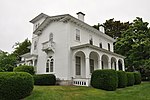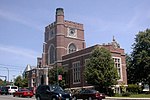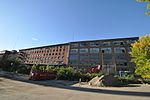Holman Stadium (Nashua)
1937 establishments in New HampshireBaseball venues in New HampshireBuildings and structures in Nashua, New HampshireFutures Collegiate Baseball League ballparksMinor league baseball venues ... and 3 more
Sports venues completed in 1937Tourist attractions in Nashua, New HampshireUse mdy dates from September 2022

Holman Stadium is a baseball stadium in Nashua, New Hampshire. It was constructed in 1937, as a multi-purpose stadium, by the City of Nashua. The official seating capacity is 2,800 people. Holman is the home of the Nashua Silver Knights of the Futures Collegiate Baseball League.
Excerpt from the Wikipedia article Holman Stadium (Nashua) (License: CC BY-SA 3.0, Authors, Images).Holman Stadium (Nashua)
Artillery Lane, Nashua
Geographical coordinates (GPS) Address External links Nearby Places Show on map
Geographical coordinates (GPS)
| Latitude | Longitude |
|---|---|
| N 42.769086111111 ° | E -71.473194444444 ° |
Address
Holman Stadium
Artillery Lane
03064 Nashua (Ward 3)
New Hampshire, United States
Open on Google Maps










